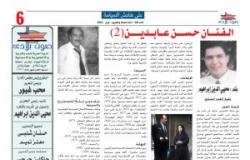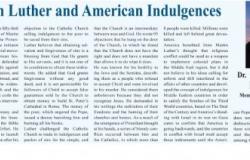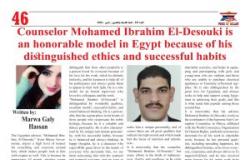Books \ The Tunisian poet and critic - Fathi Hamzawy
'' Fire '': Its Significance and its Relation to the Narrative Movement in the Story of '' In vain '' by Huda Hajaji Ahmed
part One:
1. Pre-threshold: In an export-like manner, the author followed the title and then the story with an additional compound of time, referring to "the situation" and reducing it to the stereotypical "dramas" in the concentric words of this language assembly. Preaching the generality of the story, a melancholy that characterized the work of the writer Huda. It is a positive gloom because it is a result of attitudes of social values that are vanishing and worn out, which prevailed in society and revealed human models overcome by the tendency of evil.
2. At the threshold "to no avail" The relationship of the addition of the group of words, and their significance in themselves, reduces the meaning of despair and recognition of defeat and reflect the dissipation of every effort wasted and lost all energy wasted in order to produce something. From here we find a close link between the significance of the threshold and the content of the previous file. The desperation reported in the title is related to "groans" and "wounds" in export. Thus, the threshold and its precursors appear to be a musical introduction with melancholy melodies as reflected in the above-mentioned act of "playing", leading all of this to transform the entire story into a musical piece. In fact, the short story is not only a musical one, but its melodies are well-known, and we are aware of the strong link between the narration and the play, especially since the new era witnessed a great convergence between the different arts and influenced one another in a general field called the Fine Arts. Beautiful art field ?. The narration has recently benefited greatly from the poetic imagination and from the optics-based work, as if you were reading a story, contemplating a statue of a sculptor, a painting of a painter or a poetic poem, and this beautiful interplay between the arts has enriched the aesthetics of storytelling. There is no doubt that the story "without success" of the piece Huda Hajaji Ahmed demonstrates this unique interplay between storytelling and playing in particular, if not the focus of this study.
The second part:
3. Light hides darkness The fire in the story is a focal point, extending over the entire text area from beginning to end, where the narrative opens (the flames are swept away ...), and it closes (starting from the flame, from the fire ...). And prepare fire in two ways: * Frankly: fire / flame / burning ... * Or by referring to the same semantic focus: ash / devouring / blending, lightening / cigarettes ... The fire in the story is accompanied by a number of intersecting, contrasting and united connotations, forming together to establish the general meaning of the story and grow through causal relationships arising from each other. A fire is a means of punishment: "Tonight, the night of punishment ...", the fire of the gods in old myths to punish those who break the law, borrowed in a marriage story revealed in the end of a story that was based on false happiness, after the discovery of the event of treason. And the fire after proving the crime become a means of salvation from the time of lies and adored love. While it is a punishment, it is purging the infidelity of treachery, impurity and deception. It works a double act, avenging the sinner by burning his things and details that he used to lie, and clearing the heart of the illusion of illusion and the dream that spread throughout the marriage. Husni's character was the target of punishment because he was only a female minister. "This dirty face must be bathed ...". As for the sarda, they are the target of cleansing. "It is necessary to enter the morning on the night of my house ...". The morning has salvation and purity from the life of lies. In both cases, the fire was an active element in the "story" as in the "discourse" if we consider it the fuel of the development of events in the psychological world of the central character. It is an external event, on the other hand, a simulation of what is happening in the world of the interior of the emotions and disorders of the discovery of the crime of treason and see the extent of the false that was surrounding that adulterous married life. The contraction of events in the text and its narrowness in the mind of the sluggish, makes the story of the kind of mental mental stories where all elements of the story are destined to enter the inner world. If we look at this inner world and how events grow from shock to surprise to anxiety, tension and deep sadness, it is enough to consider the evolution of the fire movement as it ignites and burns and develops from white to red to black: "Fire on the way to extinguish, colors turn from white to Red to black, where the desired fusion between the artistic side and the semantic dimension occurs, and that is the sign of aesthetic cutting and the eloquence of maturity. It is worth noting here that we refer to the story of "futile" stories of fire in the ancient legends, recall the story of "Nero", who burned Rome and continued to play the melodies Fire. And the flame and playing in the story of Huda Haggai Ahmed Ytaglian since the export and later in the celebration of Sarda burning details of "Casanova" embodied in the character of "Hosni". Therefore, at the beginning of the study we pointed to the relationship between narration and playing. In contrast, the contrast used in storytelling has been altered by the structure of the stories that have been called to serve the social psychological content presented in the story.
Said Amer




 رئيس التحرير يكتب : من التراب وإلى التراب يعود .. تحويل جثث الموتى إلى سماد عضوى
رئيس التحرير يكتب : من التراب وإلى التراب يعود .. تحويل جثث الموتى إلى سماد عضوى
 رئيس التحرير يكتب : لماذا تصر الحكومة على استمرار شريف أبو النجا رئيسا لمستشفى 57357 رغم الشواهد العديدة على فساده
رئيس التحرير يكتب : لماذا تصر الحكومة على استمرار شريف أبو النجا رئيسا لمستشفى 57357 رغم الشواهد العديدة على فساده اقرأ في العدد الجديد ( عدد يناير ٢٠٢٣ ) من جريدة صوت بلادي
اقرأ في العدد الجديد ( عدد يناير ٢٠٢٣ ) من جريدة صوت بلادي









